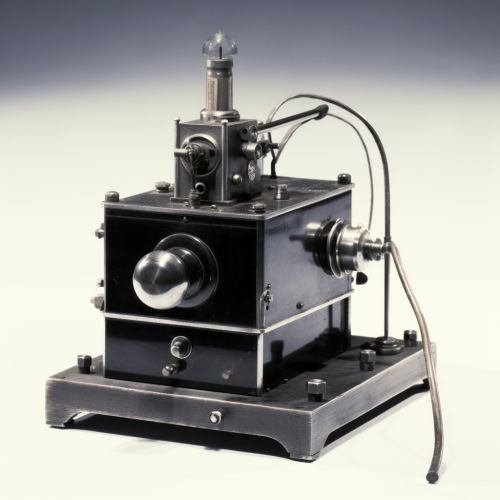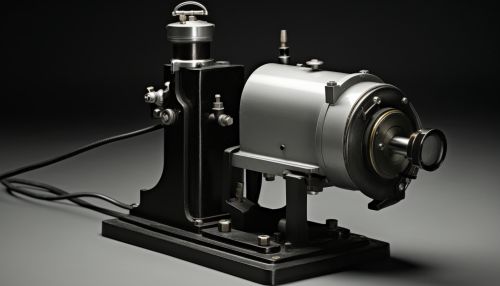Sensor
Introduction
A sensor is a device that detects and responds to some type of input from the physical environment. The specific input could be light, heat, motion, moisture, pressure, or any one of a great number of other environmental phenomena. The output is generally a signal that is converted to human-readable display at the sensor location or transmitted electronically over a network for reading or further processing.
History
The concept of a sensor has been around for a long time, with the first rudimentary sensors being developed in the early 20th century. These early sensors were primarily used in industrial and scientific applications where they were used to measure physical quantities such as temperature and pressure. Over time, the technology behind sensors has evolved and become more sophisticated, leading to the development of sensors that can measure a wide range of physical and chemical phenomena.


Types of Sensors
There are many different types of sensors, each designed to measure a specific type of input. The major types of sensors include:
Physical Sensors
Physical sensors are designed to measure physical properties such as pressure, temperature, force, vibration, and acceleration. Examples of physical sensors include thermocouples, strain gauges, and accelerometers.
Chemical Sensors
Chemical sensors are designed to detect and measure the presence of specific chemicals or compounds. These sensors can be used in a variety of applications, from detecting the presence of harmful gases in the environment to measuring the concentration of specific compounds in a chemical process. Examples of chemical sensors include gas detectors and pH meters.
Biological Sensors
Biological sensors, also known as biosensors, are devices that use biological materials to detect and measure the presence of specific substances. These sensors can be used in a variety of applications, from medical diagnostics to environmental monitoring. Examples of biological sensors include glucose meters and DNA microarrays.
Optical Sensors
Optical sensors are devices that measure the amount of light or changes in light. These sensors can be used in a variety of applications, from detecting the presence of light in a room to measuring the intensity of light in a scientific experiment. Examples of optical sensors include photodiodes and light meters.
Sensor Technology
The technology behind sensors has evolved significantly over the years. Early sensors were primarily mechanical in nature, relying on physical changes in the sensor to measure the input. Modern sensors, on the other hand, often use electronic or optical technology to measure the input.
Mechanical Sensors
Mechanical sensors work by measuring physical changes in the sensor. For example, a pressure sensor might use a flexible diaphragm that deforms under pressure. The amount of deformation can then be measured and used to determine the pressure.
Electronic Sensors
Electronic sensors use electronic components to measure the input. For example, a temperature sensor might use a thermistor, a type of resistor that changes its resistance with temperature. The change in resistance can then be measured and used to determine the temperature.
Optical Sensors
Optical sensors use light to measure the input. For example, a light sensor might use a photodiode, a type of semiconductor that generates a current when exposed to light. The amount of current can then be measured and used to determine the intensity of the light.
Sensor Applications
Sensors are used in a wide range of applications, from industrial processes to consumer electronics. Some of the major applications of sensors include:
Industrial Applications
In industrial applications, sensors are used to monitor and control processes. For example, temperature sensors might be used to monitor the temperature of a furnace, while pressure sensors might be used to monitor the pressure in a pipeline.
Medical Applications
In medical applications, sensors are used to monitor patient health and diagnose diseases. For example, glucose sensors are used to monitor blood sugar levels in diabetic patients, while heart rate sensors are used to monitor the heart rate of patients.
Environmental Applications
In environmental applications, sensors are used to monitor the environment and detect changes. For example, air quality sensors might be used to monitor the levels of pollutants in the air, while water quality sensors might be used to monitor the levels of contaminants in a body of water.
Consumer Electronics
In consumer electronics, sensors are used to provide functionality and improve user experience. For example, motion sensors are used in smartphones to detect the orientation of the device, while light sensors are used in digital cameras to adjust the exposure.
Future of Sensors
The future of sensors is likely to be shaped by advances in technology and the increasing demand for sensors in various applications. Some of the trends that are likely to shape the future of sensors include:
Miniaturization
As technology advances, sensors are becoming smaller and more compact. This trend is likely to continue in the future, with the development of micro and nanoscale sensors.
Integration
Sensors are increasingly being integrated into other devices and systems. This trend is likely to continue in the future, with the development of integrated sensor systems that can measure multiple inputs simultaneously.
Intelligent Sensors
With the advent of artificial intelligence and machine learning, sensors are becoming more intelligent. These intelligent sensors can process and analyze the data they collect, making them more useful and efficient.
